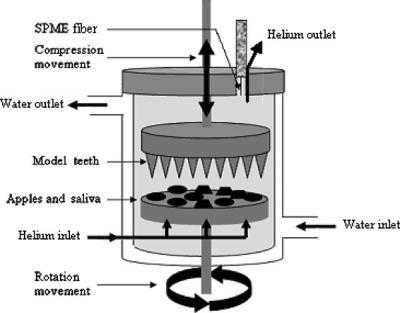Creative artificial mouth for robots
For years scientists have been trying to create electric blades - a robot taste device that can have important applications in improving food quality and safety. However, before machines learn how to taste food, they must learn how to chew food first. Scientists have designed an artificial mouth model that mimics the necessary steps of digestion in humans - like chewing, secreting saliva and crushing the original food.
According to the study, Gaëlle Arvisenet and colleagues pointed out a number of factors related to the release of aromatic compounds and taste in the mouth. Chewing, salivation, food crushing and temperature all affect the taste and taste of food before food is swallowed.
In order to accurately simulate the effects of chewing, Arvisenet's team must create a machine that mimics some (if not all) of these sophisticated processes. Arvisenet said 'Our goal is not to mimic the conditions in human mouths, but to imitate the results of chewing'.

Presentation scheme of artificial mouth parts that scientists have designed to imitate human digestion.(Photo: American Chemical Society)
Researchers compared their machines and chewing apple's mouth. These chewed apples were carefully studied in terms of texture, color and aromatic secretion. According to Arvisenet, 'Experimental conditions are defined as the part of the fruit that is crushed in the state closest to the fruit chewed in the human mouth.'
The article 'The effect of apples is crushed in the secretion of volatile compounds of a new artificial mouth device' is expected to be published in the issue of Agricultural and Food Chemistry. May 14.
- 9 scary functions make robots become more and more like humans
- Congratulations to the designers, the people who are doing the job are hard to rob the robbery
- Artificial engine for superhuman robot
- Google's robots will be able to upgrade themselves, build higher-end robots
- What is the truth behind robots 'killing people'?
- Robots also distinguish between sex and race
- Beautiful creative spaces that make you
- Start to worry about the future of 'artificial intelligence'
- Humans can marry robots for 30 years
- Properly implementing these principles, robots will not be able to overthrow people
- Expert: The prospect of rebellion against humans has come close
- Artificial leather for human robot
 Daily use inventions come from universities
Daily use inventions come from universities Special weight loss device helps prevent appetite
Special weight loss device helps prevent appetite 8 inventors were killed by their own inventions
8 inventors were killed by their own inventions Iran invented a motor car powered by water
Iran invented a motor car powered by water